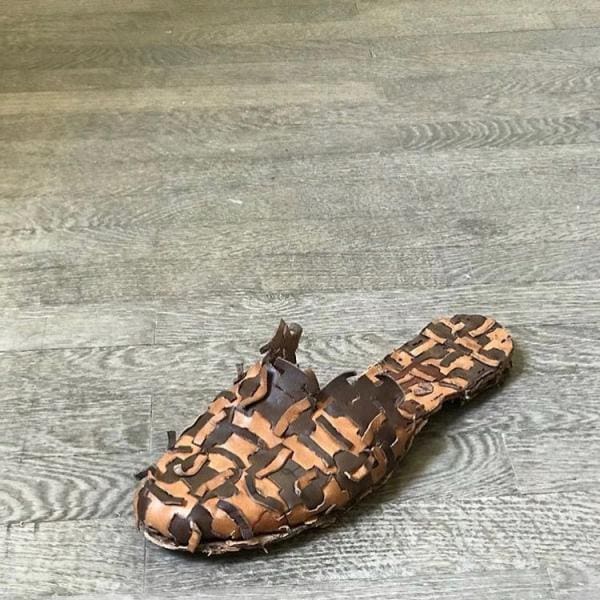Inspiring Design: Hannah Whitefoot, CCS Fashion Accessories Design
May 3, 2019Inspiring Design: Hannah Whitefoot, CCS Fashion Accessories Design
Senior Fashion Accessories Design student Hannah Whitefoot is creating innovative, sustainable design, and, even before graduating from CCS in May 2019, she’s been putting her considerable skill to the test at work wear and outdoor apparel legend Carhartt. In December 2018, Whitefoot parlayed an internship at the brand into a full-time position as an assistant outerwear designer, while still attending CCS part-time. She is a practitioner of and advocate for sustainable design — repurposing materials and using low-impact techniques that set her accessories apart.
Much more than a buzzword, “sustainable” design is a growing trend that addresses the negative environmental, social and economic impact of “fast fashion” — clothes that are mass produced cheaply in order to maximize manufacturer profit. From buyback systems that recycle well-loved consumer items to upcycled vintage, ethical production methods, and humane conditions for workers, fashion labels like Eileen Fisher, Reformation and vegan shoe brand Nak are pointing the way forward by making clothes and accessories that are beautiful, on trend and environmentally conscious.

“I wanted to figure out a way to avoid being wasteful, and I wanted to use newer materials, in addition to leather, and apply a different technique,” explained Whitefoot about her designs. At CCS, Whitefoot has designed mostly shoes and handbags but has created larger pieces as well, all while remaining conscientious. For her senior thesis, she used the scraps left over from larger projects to create a tab system — tiny pieces of fabric or leather that fit together without glue, hardware or sewing. Think Lincoln Logs.
“I used a lot of synthetic materials at first,” Whitefoot said, “but found out that they were worse for the environment. But the leather the Fashion Accessories Design department uses is vegetable tanned,” a process that has a much smaller environmental footprint.
While still in high school, Whitefoot assumed that she would end up studying math or science in college. “But design uses both areas of the brain and involves a lot of problem solving, so I kept moving toward that.”
